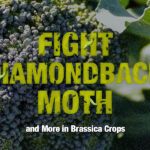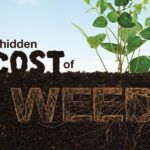Untold Benefits
New research reinforces the value and safety of neonicotinoids, providing a better understanding of their major economic and social impact.

Lee Townsend cringes when he hears media reports linking broad bee health maladies to the labeled use of neonicotinoids, especially since there’s no scientific research to back up the claims.
“If you’re hearing about neonicotinoids and the demise of bees, you’re only hearing one side of the story,” says Townsend, vice president of TPLR Honey Farms in Stony Plain, Alberta, Canada. “All this doom and gloom is not representative of the beekeeping industry.”
While neonicotinoids have been blamed for unpredictable bee deaths, and European commissioners passed a two-year restriction on neonicotinoids, years of independent monitoring show neonicotinoids, when used properly, do not harm the health of bee populations.
“When you really dig into bee health, you’ll find it’s primarily a management issue,” says Townsend, who has kept honey bees for 25 years. “If you keep bees strong and healthy with proper nutrition and disease control, the bees will take care of themselves.”
Townsend appreciates new research that’s balancing the debate on neonicotinoids, which are currently under review by the U.S. Environmental Protection Agency (EPA), the Pest Management Regulatory Agency (PMRA) and the California Department of Pesticide Regulation (CDPR). Commissioned by Syngenta, Bayer CropScience, and Valent U.S.A., with support from Mitsui Agrochemicals, Inc., a series of comprehensive reports from AgInfomatics, LLC, an independent agricultural consulting firm, reveals some surprising facts about neonicotinoids in North American agriculture.
“Not only did our reports show the value of neonicotinoids, but they highlighted a number of unintended consequences if neonicotinoids weren’t available,” says Pete Nowak, Ph.D., principal and co-founder of AgInfomatics. He is also the former chair and a professor emeritus at the University of Wisconsin-Madison Institute for Environmental Studies.
Counting the Cost
Neonicotinoids were introduced in the late 1990s as an alternative to organophosphate and pyrethroid pesticides, and quickly became popular among growers because of their excellent pest control. In the fall of 2013, the AgInfomatics team began evaluating neonicotinoid use in the U.S. and Canada on commodity crops (including corn, soybeans, wheat, cotton, sorghum and canola) and specialty crops (including citrus, vegetables and grapes), plus turf, ornamentals and landscapes.
The researchers surveyed more than 22,000 growers, consumers and applicators in the U.S. and Canada, and reviewed in-depth pesticide use information. “Neonicotinoid seed treatments are among the most valued insect control methods in North America,” says Paul Mitchell, Ph.D., a consultant for AgInfomatics and associate professor of agricultural economics at the University of Wisconsin-Madison. “U.S. corn and soybean growers estimate neonicotinoids’ value at $12 to $13 an acre on average, while the total value of neonicotinoids in U.S. crop production ranges from $4 billion to $4.3 billion annually for the U.S. economy.”
Unintended Consequences
AgInformatics also looked at what would happen if neonicotinoids were no longer available. The study revealed many unforeseen effects, including:
- Reduced yields. Without neonicotinoids, growers would be denied a proven, convenient method to effectively control yield-robbing pests, such as Asian citrus psyllid, aphids, whiteflies, Colorado potato beetle, wireworms, seed maggots and white grubs.
- Higher insecticide use. Without neonicotinoids, acres treated with older, more toxic insecticides would roughly triple. In addition, findings in the reports project that the total number of pounds of active ingredients in insecticides applied to crops would increase from 13 million to 28.2 million pounds, a 116 percent increase, Mitchell notes.
- Greater pest control challenges and resistance issues. Populations of invasive pests, like whiteflies in the southwestern U.S., will likely rise if neonicotinoids aren’t available, Nowak says. Similar trends will also occur with Asian citrus psyllid, a pest that transmits the deadly citrus greening disease, which is threatening productive trees in Florida. If pest outbreaks become more common and there are limited options then insecticide-resistance issues will also be a greater concern, says Nowak.
- Increased operating costs. If neonicotinoids were unavailable, growers estimate that the average cost per treated acre would increase more than $8.30 for corn, $3.30 for soybeans and more than $2.20 for cotton. For a variety of different crops, this creates a projected total net cost increase of $848 million per year, captured in everything from increased spending on insecticides to costlier application methods, Mitchell says.
- Lower-quality agricultural products. Today’s consumers are used to selecting unblemished fruits and vegetables. “A major East Coast producer and big-box-store supplier that recently tried to go without neonicotinoids learned the hard way how this can lead to more insect damage and less marketable products,” Nowak says.
- Higher food costs. More insect damage and higher production costs will translate into rising prices at the grocery store, especially for meat, dairy and eggs, because of higher feed costs, Mitchell says.
- Harm to beneficial insects and integrated pest management (IPM). Many growers rely on neonicotinoid seed treatments to provide targeted, systemic control that reduces the risk of insecticide exposure to beneficial insects. “IPM will suffer without the beneficial insects,” Nowak says.
Many of these unintended consequences are reportedly already occurring in the European Union, which started restricting neonicotinoids in December 2013. “There was a tremendous flea beetle outbreak in the canola-growing regions of northern Europe this fall,” says Caydee Savinelli, Ph.D., pollinator and IPM stewardship lead for Syngenta. “Growers had to spray about every week and were still losing about 20 percent to 30 percent of the crop.”
Banning neonicotinoids is not a science-based decision, because it does not address the complex interplay between crop production and beekeeping, according to a 2011 study. Jerry Bromenshenk, Ph.D., a research director at the University of Montana and CEO of Bee Alert Technology, and his fellow bee investigators fed various levels of neonicotinoids to clusters of honey-bee hives in Montana to study their effect on bee health. While improper use can lead to individual bee losses, the team did not see any effects on the hive as a whole. “It’s clear that neonicotinoids provide a better alternative than any insecticides that have been used before,” says Bromenshenk.
Neonicotinoid seed treatments are among the most valued insect control methods in North America. U.S. corn and soybean growers estimate neonicotinoids’ value at $12 to $13 an acre on average, while the total value of neonicotinoids in U.S. crop production ranges from $4 billion to $4.3 billion annually for the U.S. economy.
Taking the Next Steps
These facts are useful to the regulatory debate, so Syngenta has submitted AgInfomatics’ socioeconomic findings on behalf of the study sponsors to the EPA, the USDA, CDPR and PMRA in Canada. “We need to ensure that the benefits neonicotinoids provide to growers are captured and growers’ voices are heard,” says John Abbott, senior regulatory affairs team lead for Syngenta. “If we don’t speak up, we run the risk of a decision based on politics, not science.”
Abbott encourages retailers and growers to visit the Growing Matters website, which provides all 15 study reports, videos, fact sheets and infographics on the benefits of neonicotinoids, as well as tips on how to show support for these valuable crop protection products.
Townsend supports these efforts. “We don’t want to cripple the opportunities to grow safe, bountiful crops. We need to work together to find common solutions to common issues in agriculture.”
4 Min Read























